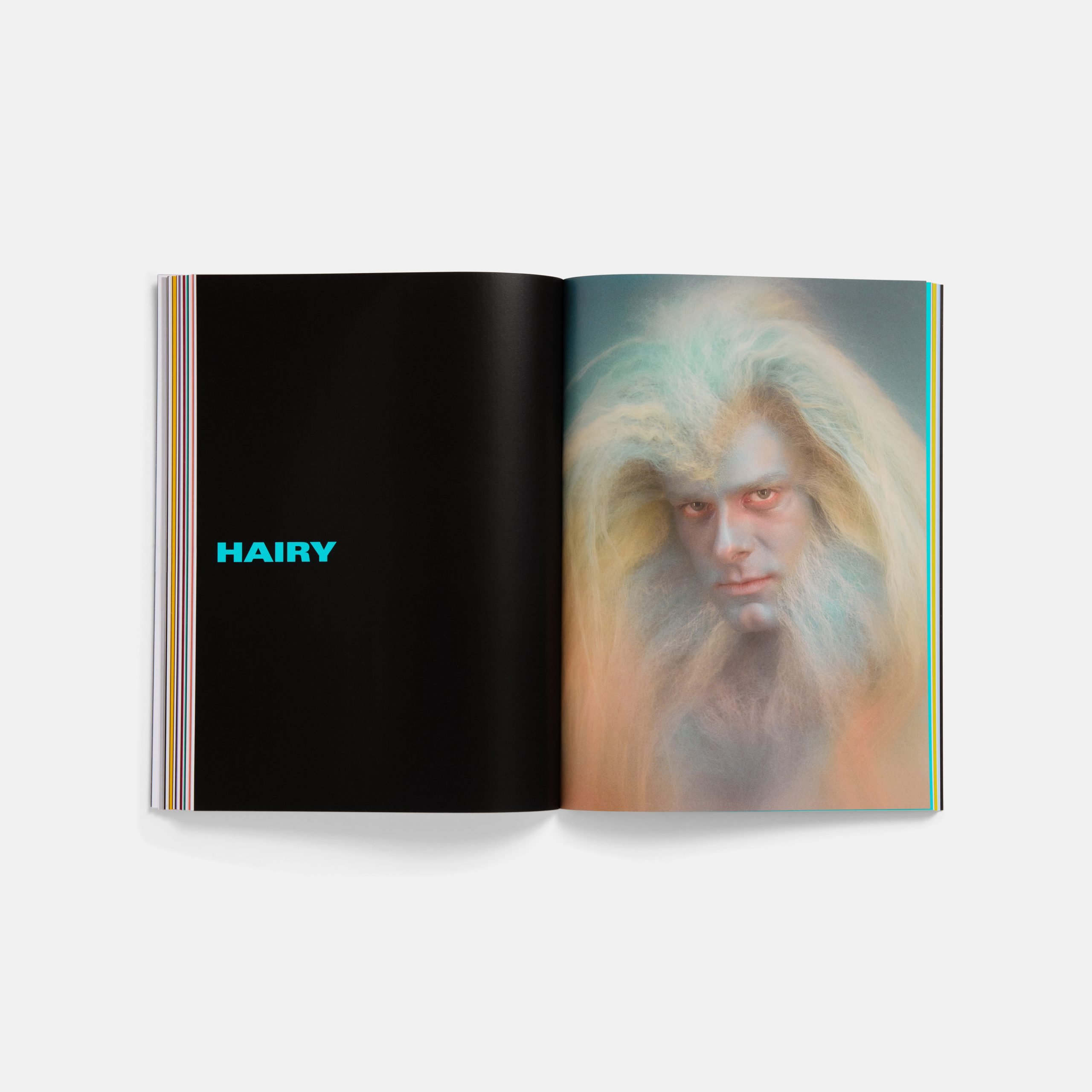
Makeup artist Emily Schubert’s first job out of college was as a “face specialist” for Paola Pivi. Specifically, she was a fabricator tasked with applying feathers to the faces of the artist’s signature polar bear sculptures. Schubert would pluck dyed turkey feathers off boas and select just the right ones to match the color and hair growth on the figures’ faces. It was delicate work. “The joke was that I was the one with a makeup background out of all the fabricators,” she told me, “and I was the face person.”
Faces, mostly human ones, have served as Schubert’s canvas for more than a decade. In that time, she has chalked up credits on films such as Good Time (2017) and The Sweet East (2023), and projects with the likes of Laurie Anderson, the late Pope.L, and Oneohtrix Point Never. Her work, however, goes beyond the mere cosmetic. To her, makeup is all “about materials,” to draw out a narrative or detail a character, whether you’re wielding a foundation brush or feathers.
Her years’ worth of on-the-job experience is now compiled in her first book, Beauty of the Beast, published by A24. It’s the rare makeup manual to offer instructions on how to add a scar to one’s face, apply old-age stipple, and attach a prosthetic nose. In short, it’s the first to combine beauty makeup and practical special effects into one handy guide.
Cover of The Beauty of the Beast by Emily Schubert. Photo courtesy of A24.
Over the book’s seven chapters are detailed, user-friendly tips and guidance on transforming a subject’s face. Photographer Jason Al-Taan shot visuals to accompany each step, which feature models including Paul Gondry (Michel’s son) and August Bag (Alex’s son). Each skill, whether making someone look gravely ill or years younger, comes with a helpful explanation of its storytelling role.
“I wanted it to show you not where to go but how to get there,” the author noted of the book’s non-prescriptive approach.
Inside The Beauty of the Beast by Emily Schubert. Photo courtesy of A24.
In the manual’s introduction, Schubert traces her self-taught path to makeup. At 13, she underwent reconstructive back surgery that left her completely ashen post-op. “If the body is so changeable,” she thought, “why not have a hand in the process?”
With that awakening, she learned to apply makeup to her high-school friends so they could appear sick to cut classes. The first test of her skills came at 14, when she landed on the set of her friend’s film school project and was tasked with zombie-fying a cast of characters with nothing but her humble beauty makeup kit.
Inside The Beauty of the Beast by Emily Schubert. Photo courtesy of A24.
Schubert created the book over the past two years in between her work on productions including Matthew Barney’s Secondary and Nathan Silver’s Between the Temples. The downtime on those sets gave her ample opportunities to really consider her craft. As she wrote in her introduction, her skill set, in many ways, is “painting and sculpture in motion.”
“You’re painting on an organ,” she told me. “You’re painting on this thing that releases sebum, that has a mucous membrane—it is medical when you think about it. Everybody’s skin is different, so you’ll have an oily or a dry canvas, depending.”
Inside The Beauty of the Beast by Emily Schubert. Photo courtesy of A24.
It’s also a canvas in need of different considerations. Take sweat, for instance. Schubert told me about the Blue Man Group’s hack of sticking straws into the back of performers’ bald caps to drain sweat. Her own experience with perspiration came when she applied prosthetics to Alex Da Corte for his 2022 Whitney Biennial performance, only to have him leak sweat through the edges of the latex glued to his face. It looked like he was crying; “it was amazing,” Schubert recalled.
“Those are the moments I live for because makeup is so much problem-solving,” she said, emphasizing the collaborative aspects of her work. “That’s where the magic is.”
Inside The Beauty of the Beast by Emily Schubert. Photo courtesy of A24.
Even the advent of CGI, she added, dims none of the allure of makeup. She credits practical effects artists Stan Winston (Aliens, Predator) and Toby Sells (Zombieland) as great resources for her. And while there are fascinating aspects to CGI filters, “it’s that temporary idea of playing around” that most invigorates her about makeup. “To play around with your appearance is just the most fun thing to do and just important for finding out where you stand.”
Still, in an increasingly digitized field, Schubert recognizes that practical effects are very much “a precious art that could be dying.” The impulse to compile her makeup and special effects secrets into a book, then, is just as much about preserving an art form as it is celebrating a transformative ritual.
“It’s all about getting ready with a ceremony to face the world or to be immortalized,” she said. “There’s an amazing transference of knowledge that can happen from the makeup chair.”